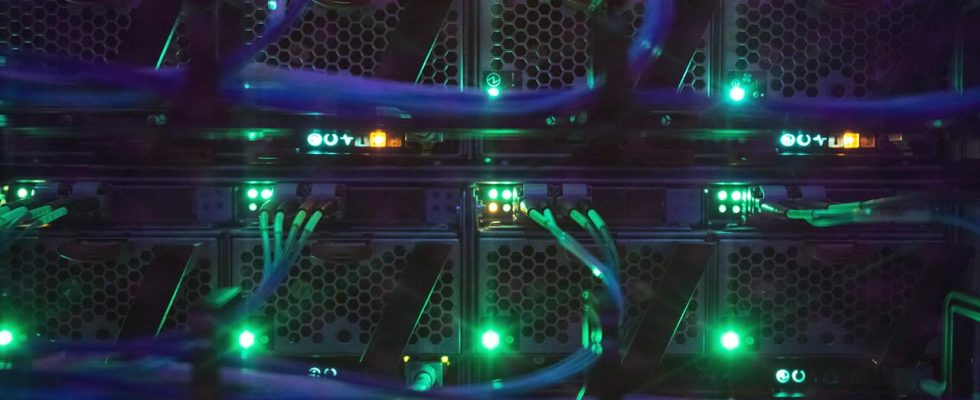background
Artificial intelligence should help people – ideally also with climate protection. So far, however, AI with immense computing power has primarily consumed energy.
300 billion emails, 100 billion instant messages, almost 600,000 minutes of material on YouTube: This is how much digital content floats through the World Wide Web every day – with consequences for the climate and the environment. “Computers consume an immense amount of electricity and energy,” says Volker Lindenstrut from the University of Frankfurt. “With our current energy mix, which is still far from 100 percent renewable energy – and I’m afraid that will take a while – that means that every kilowatt hour we consume generates CO2 emissions somewhere.”
Soon a 30 percent share Power consumption?
Digital systems and data centers alone consume around four percent of global electricity consumption; If you include all devices, the proportion is even eight percent. The trend is rising: In the next few years, the proportion could rise to 30 percent, warns Ralf Herbrich, managing director of the Hasso Plattner Institute. Among other things, he researches artificial intelligence and sustainability. A main reason for increasing electricity consumption is artificial intelligence, which requires very energy-intensive systems.
“This is because it is very complicated to calculate intelligent behavior,” says Herbrich, referring to statistics. “Over the past decade, the amount of energy and computing required to continually produce more accurate models has doubled every three and a half months.” This shows that energy consumption is growing very sharply due to AI. For example, if all Google queries in the future used AI, that alone would cost more electricity per year than Ireland’s entire annual consumption.
Great potential for climate protection
But artificial intelligence and automation also offer new opportunities to protect the climate. Herbrich also deals with so-called “Clean IT”. “The term means what hardware we use – i.e. which chips and which network adapters. But also what software and, above all, how we create this software,” explains the scientist. The central question: “How can we use artificial intelligence in a more targeted and better way to reduce energy consumption, optimize energy storage, but also minimize our own energy consumption?”
For example, AI could coordinate transportation and make it more efficient, smart houses could reduce energy consumption, and AI-controlled sensors could detect forest fires early and thus minimize climate damage.
AI forgives calculation errors and incorrect rounding
But the IT systems themselves could also become more efficient. There is particular potential in overly complicated programming and poor IT system design. Herbrich gives an example: The computer was originally developed to do error-free calculations in finance. AI, on the other hand, does not always need computational precision. “This means that today we are already expecting much lower numerical precision and rounding errors in order to enable artificial intelligence,” says Herbrich. That alone saves ten times the energy.
Politicians also want to promote energy savings through AI and automation in the future. In March 2022, the Federal Government’s IT Planning Council issued recommendations on “Green IT”. In addition, all federal states should have “Green IT” officers in the future. However, given the speed and profitability of digitalization, this approach does not go far enough for critics. Politicians should provide greater incentives for “Green IT” in order to effectively protect the climate.
Lukas Wiehler, NDR, tagesschau, December 6th, 2023 3:01 p.m

